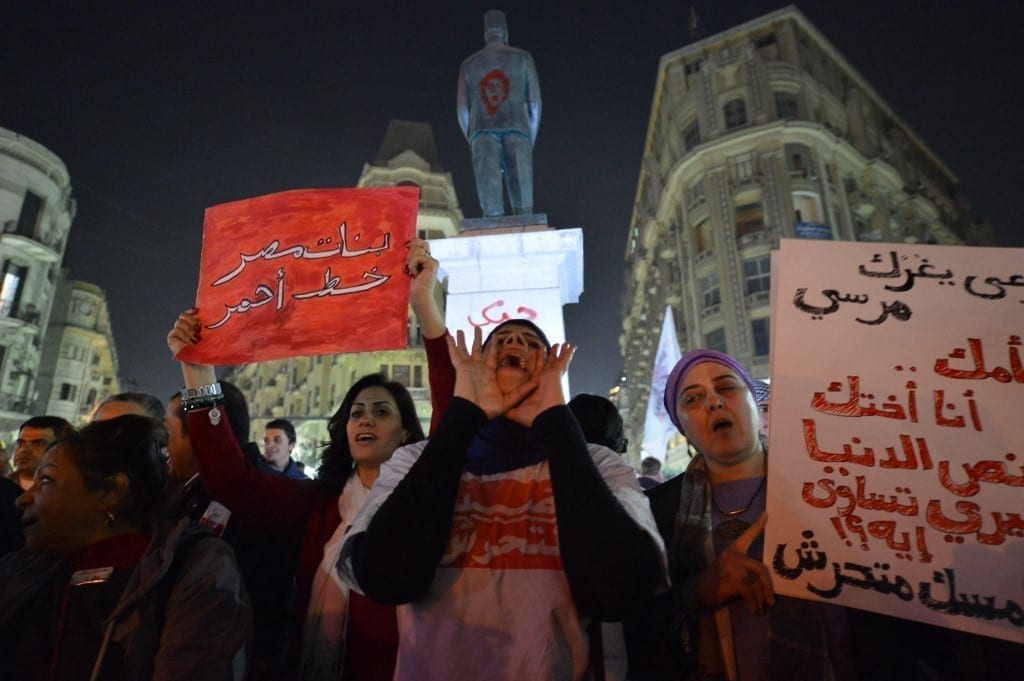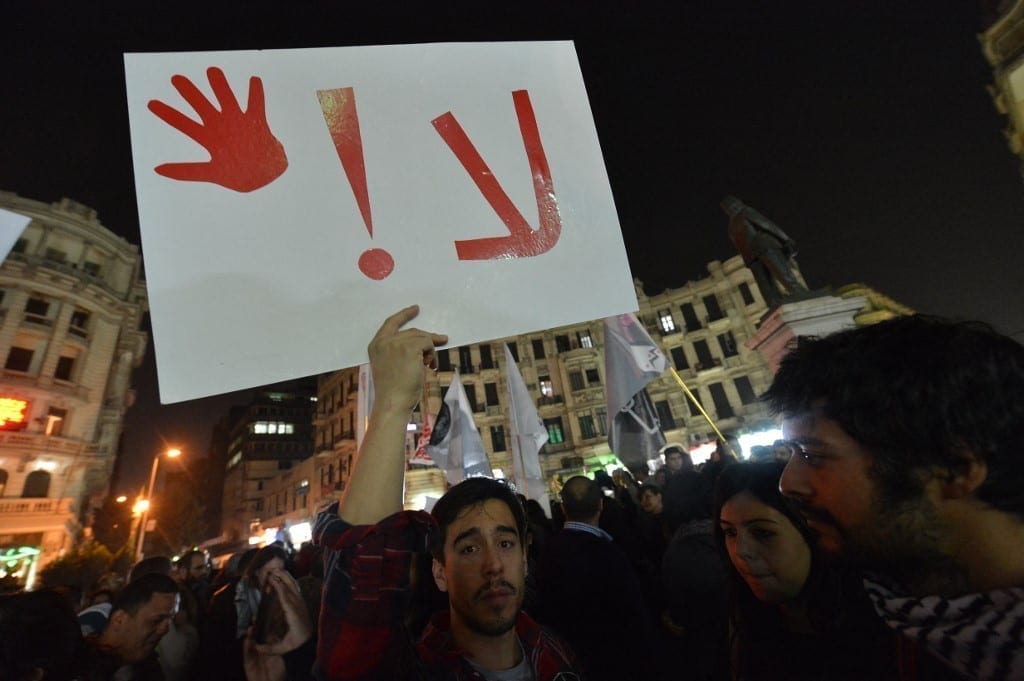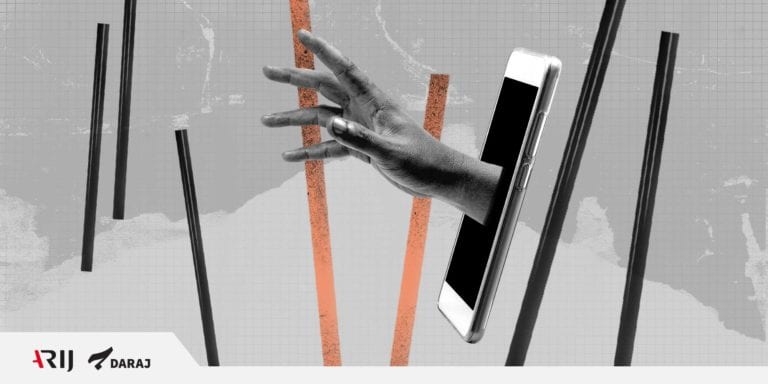Confronting violence against women in Egypt in a serious manner is extremely difficult, and fraught with risk. What makes the challenge so complex is the sheer scale of the violence and the fact that it remains a largely hidden phenomenon.
Violence against women is rooted in the fabric of everyday life, entrenched in both the public sphere and private spaces. It is a physical, moral, verbal, and implicit. It is by men against women, and by women against women as well. It is practiced by both public and private institutions.
Some of the institutions that deal with violence against women still reject the mechanisms of disclosure and accusation, which is in the interest of the aggressors.
The impossibility of agreeing on clear definitions and terminology is one important aspect of what makes confronting violence against women so difficult. In fact, the fight against violence is often diluted to a mere struggle over what should be categorized as violence in the first place.
And then, in situations that consider (some) violence acceptable, people seek to shift the debate to being about what (amount) violence should be accepted. Not to mention the struggle over mechanisms.
What furthermore constitutes the crisis in confronting violence against women in Egypt is that part of the resistance originates from institutions and groups that are supposed to nurture a safe environment for those working against violence against women is still full of people who reject the mechanisms of disclosure and accusation.
They spread doubts and fears that are in the interest of the aggressors. This reveals, at least in some cases, a culture of collusion and immunity that has been able to spread for a very long time and still very much exists within the institutions and groups that are supposed to be human rights-based and progressive, and believe in the right to live a life free of violence. Yet, despite all that, the past year witnessed a positive development, both in quantity and quality, in efforts combatting violence against women. At the forefront ranks Storybook, an effort to encourage more women to share their experiences with violence, and to reach out to more diverse groups of women, especially those who traditionally lack the opportunity to make themselves heard. Such efforts also aim to force state institutions to adopt different ways of dealing with violence against women.
The progress within each of these targets has been uneven. The progress in the number of women encouraged to reveal their personal experiences was significant compared to previous years, while the progress in including wider groups of women was limited. The progress in terms of pushing the state bodies to deal with violence against women in a different manner was mixed … at best.
The Storybook
The second half of 2020 witnessed the arguably highest rate of published testimonies of victims and survivors of violence against women in the history of the feminist movement in Egypt. Responsible for publishing the vast majority of these testimonies is the Storybook. From late July 2020 until February 2021 the blog published 37 testimonies by 36 women (one testimony was a follow-up to a previous testimony).
The reason for the blog’s success in attracting so many women sharing their experiences is the adaptation of a double policy of anonymity. First, the blog guarantees the anonymity of the victim/ survivor. Second, the blog guarantees the anonymity of those in charge of the blog, which has allowed for its continuity.

The testimonies published by Storybook have so far accused human rights activists, journalists and administrators in press institutions, professionals in the artistic field, teachers, clerics, and doctors.
The forms of violence revealed include rape, harassment, exploitation, detention, physical abuse, harassment, psychological pressure, and abuse of power.
The accused include human rights activists, journalists and administrators in press institutions, professionals working in the artistic field, teachers, clerics, doctors, and others. The diversity of women who testified is still limited, as most of them work in cultural fields. Having said that, the latest testimony published on the blog (No. 37) arguably as no other illustrates the blog’s success, as it concerns a woman who would normally not disclose her story.
The women in question is an employee in a company and was subjected to sexual harassment (and other types thereof) from her colleagues at work. The harassment was partly despite to her demure style of clothing (scarf / long veil and dark colors).
An interesting aspect of the storybook blog is that it does not have a hierarchical structure. In fact, those behind the blog are a small group of people who maintain their anonymity. This protects them from defamation and harm in various ways, which are risks to be expected when publishing testimonies that may involve people in power.
Working in small groups, and relying on networking with other individuals and groups, allows for a high level of flexibility. Social media networks, primarily Facebook, Instagram and Twitter, provide for a well-suited platform to reach the largest possible number of allies without the need for institutional relationships. The inclusion of a broader group of women remains one of the biggest challenges. Yet One Sudanese refugee woman was able to expose the extortion and sexual exploitation she was subjected to by a human rights activist and lawyer specialized in providing legal support to refugees.
This is the most prominent case in which a representative of one of the most vulnerable and exploitable groups was able to shed light on the different types of violence refugees can be exposed to. However, many other groups of women exposed to high rates of domestic or workplace violence still have not shared their experiences. Working to reach them will remain one of the most urgent tasks in the effort to combat violence against women.
State Intervention
The success in summoning state institutions to intervene in defense of the victims of violence against women was, and still is, not guaranteed. There has been some success is passing an amendment to the law that allows for the protection of the confidentiality of the data of informants of rape or harassment to ensure that they are not subjected to threats or abuse.
There was also an announcement by the Public Prosecution Office, triggered by the cases that have attracted public attention, that every woman subjected to harassment or rape should report what she has been subjected to.
State Institutions Are Not an Ally of Women
The National Council for Women (NCW) promised to provide support for the women who report the council. Such statements, even though institutions generally meets few of their promises made, are a reflection of the widespread interest in violence against women on social media. The truth is that state institutions are not an ally of women. They are able to respond to the pressure in one issue or another produced first by social media and then by traditional media.
The “Assault Police” group detonated the Fairmont Case
The most prominent case last year consisted of several children of prominent Egyptians being accused of the gang rape of a girl in the Fairmont Nile City Hotel.
The crime was committed in 2014 yet only came to light in the middle of last year through social media. Afterwards, the NCW called upon the victim to submit a complaint and promised to support her. The NCW submitted the complaint to the Public Prosecution Office.
Yet, the latter only started an investigation after a period of time, which allowed most of the suspects to flee out of Egypt. Meanwhile, witnesses in the case were subjected to smear and defamation campaigns.


The prosecutor then ordered the arrest of several of them and charged them with debauchery. They were furthermore subjected to virginity tests and anal examinations, and imprisoned pending the investigations. The Fairmont case revealed that state institutions are still governed by a prevailing culture of misogyny. The Fairmont case, and several other cases that have emerged over the past year, show that achieving justice and compensation for victims/ survivors of violence against women through legal processes and state institutions is still hindered by a prevailing culture that is fundamentally misogynistic.
Modifying this culture is extremely difficult and in fact extends the scope and available resources of the feminist, rights and other groups working in the field of combating violence against women.
In a best-case scenario, the institutions will be able to deal with only a very limited percentage of cases, and only with cases that meet the legal requirements, which in the vast majority of cases are impossible to meet. Worse, state institutions themselves are responsible for a large percentage of violent crimes against women, especially in prisons and detention centers.
This, in addition to being responsible for the violence contained in institutional and legal structures, the most prominent of which is the personal status law. Conclusion: despite the many sources of frustration, there has been some progress, thanks to the persistent efforts of some groups fighting with tireless determination for change. And, frankly, they deserve all the salutations, appreciation, and support we can offer.
Read Also:







